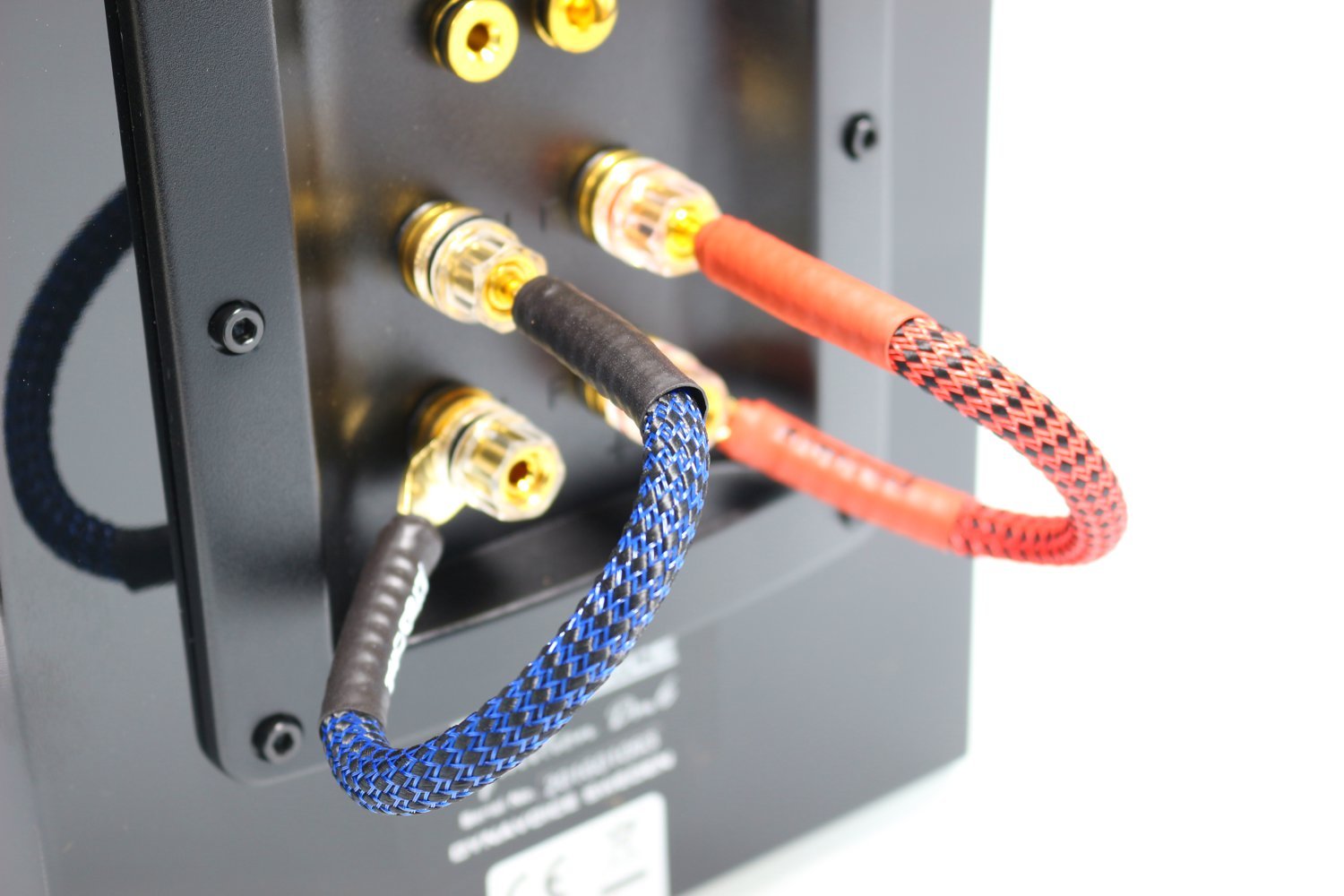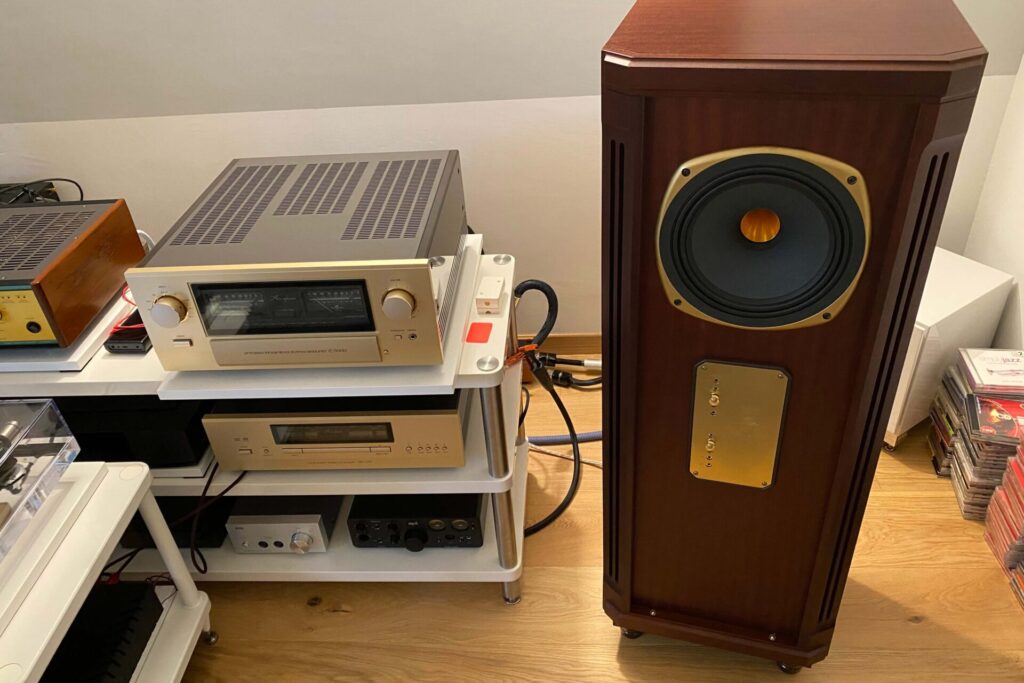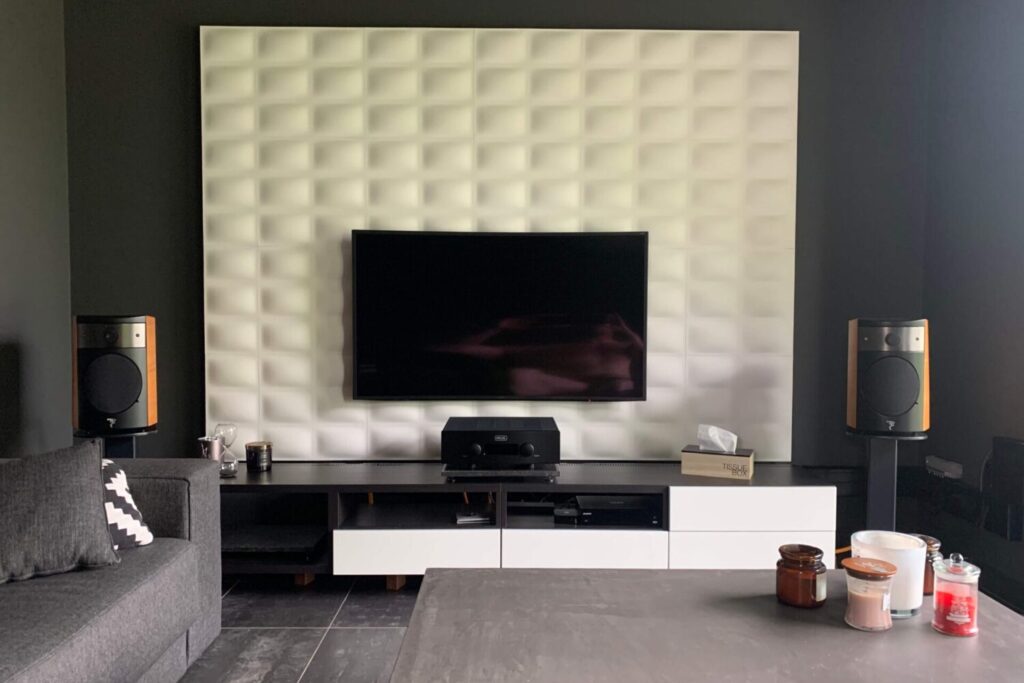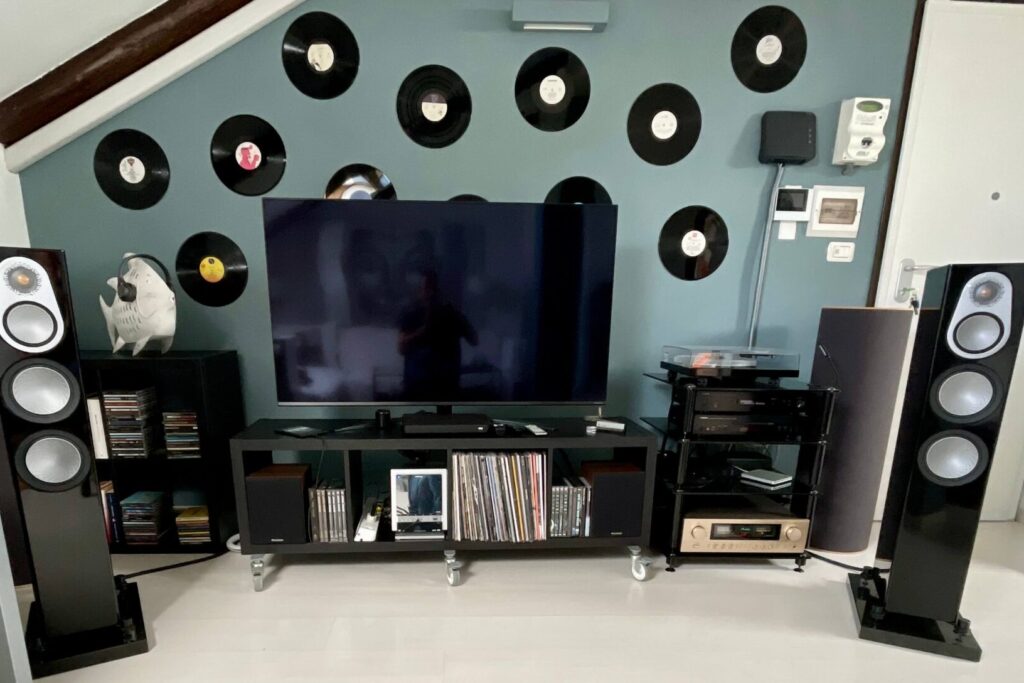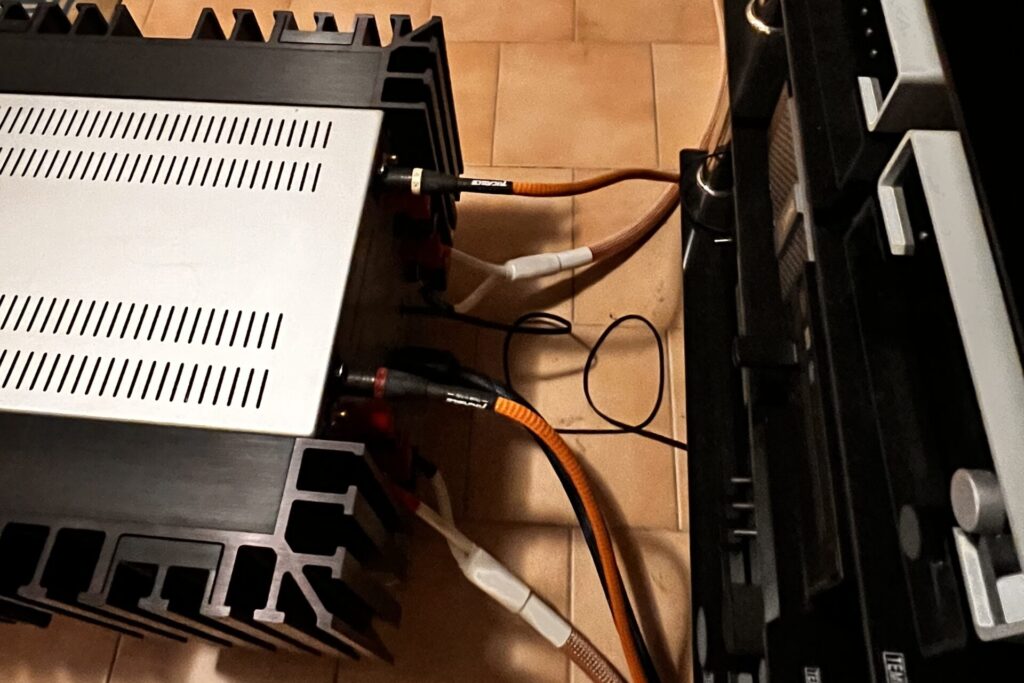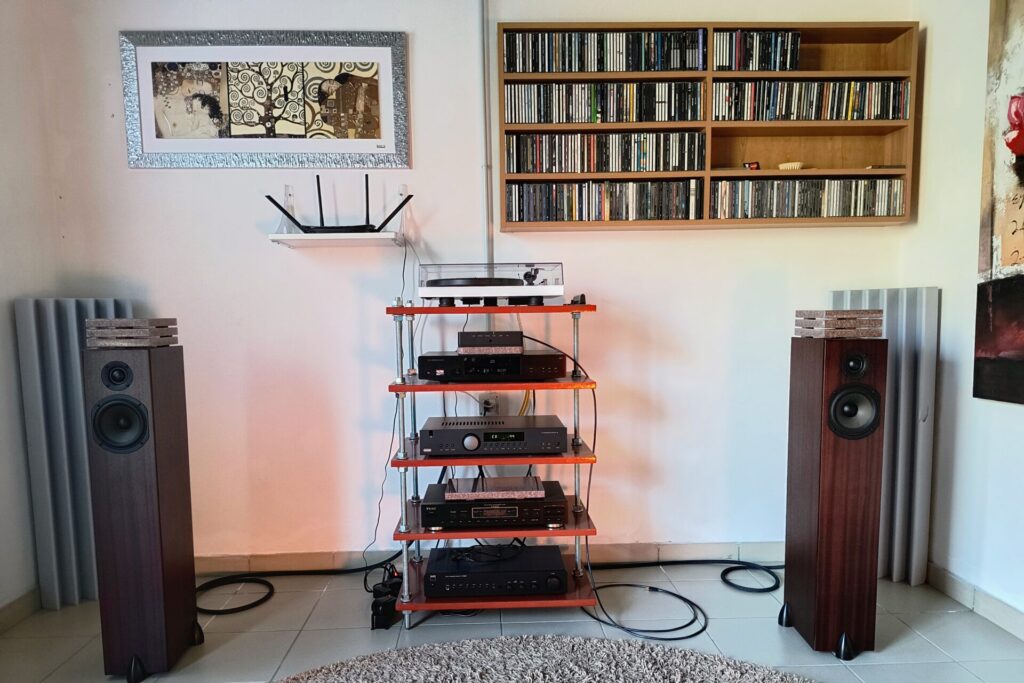When we buy a loudspeaker, on the back of it we will in most cases have four terminals, in pairs of two, to which we connect our speaker cable, supported by jumpers as standard. But how to connect jumpers and speaker cables?
And what are the double terminals for? To connect our speaker in bi-amplification or bi-wiring.
These alternative modes of connection, almost always for the use of a small circle of enthusiasts, if not used, require that the HF (high frequency) and LF (low frequency) terminals remain jumpered together. The aim is to make the crossover work in unison.
Why is it that loudspeaker manufacturers, given the limited use of bi-amping/bi-wiring, produce speakers with dual connections? Well, it's difficult to give a precise answer, but one can speculate that it is to offer a more versatile and complete product. Or maybe it's because they are "more showy" and attract more attention from buyers. What is certain is that they are present on almost every speaker and therefore need to be understood and managed properly, to avoid a possible advantage becoming a disadvantage.
Immediately after we have purchased our new speakers, we start to assemble them and are struck by a doubt. Should the speaker cable from the amplifier to the speakers be connected to the bottom pair or the top pair? That is, to the input for the bass or the high frequencies? And above all, will the jumpers supplied by the manufacturer of the speakers be adequate for the task at hand or will they ruin our efforts to improve the quality of the sound emitted by the system?
How to connect jumpers. Up or down?
The fundamental importance of jumpers stems from the fact that, over time, loudspeaker manufacturers have decided to make loudspeakers with two pairs of connectors and, therefore, a split crossover. The jumper is necessary to carry the signal at both high and low frequencies. But, in mono-wiring, where is it best to connect your speaker cable? Below or above? This is a question that many people ask and we will try to answer it.
Some say that the cable from the amplifier should reach the tweeter (or rather the mid-high) terminals and not the bass terminal, leaving the "chunks" or jumpers to carry the signal to the woofer terminals. High frequencies are the most delicate and sensitive part of the audio spectrum, also because of the low voltages involved. This is why, according to these opinions, it is better for the signal from the amplifier to reach the tweeter terminals without any other pieces of cable or metal bars in between (in simple terms: minimising contact resistance).
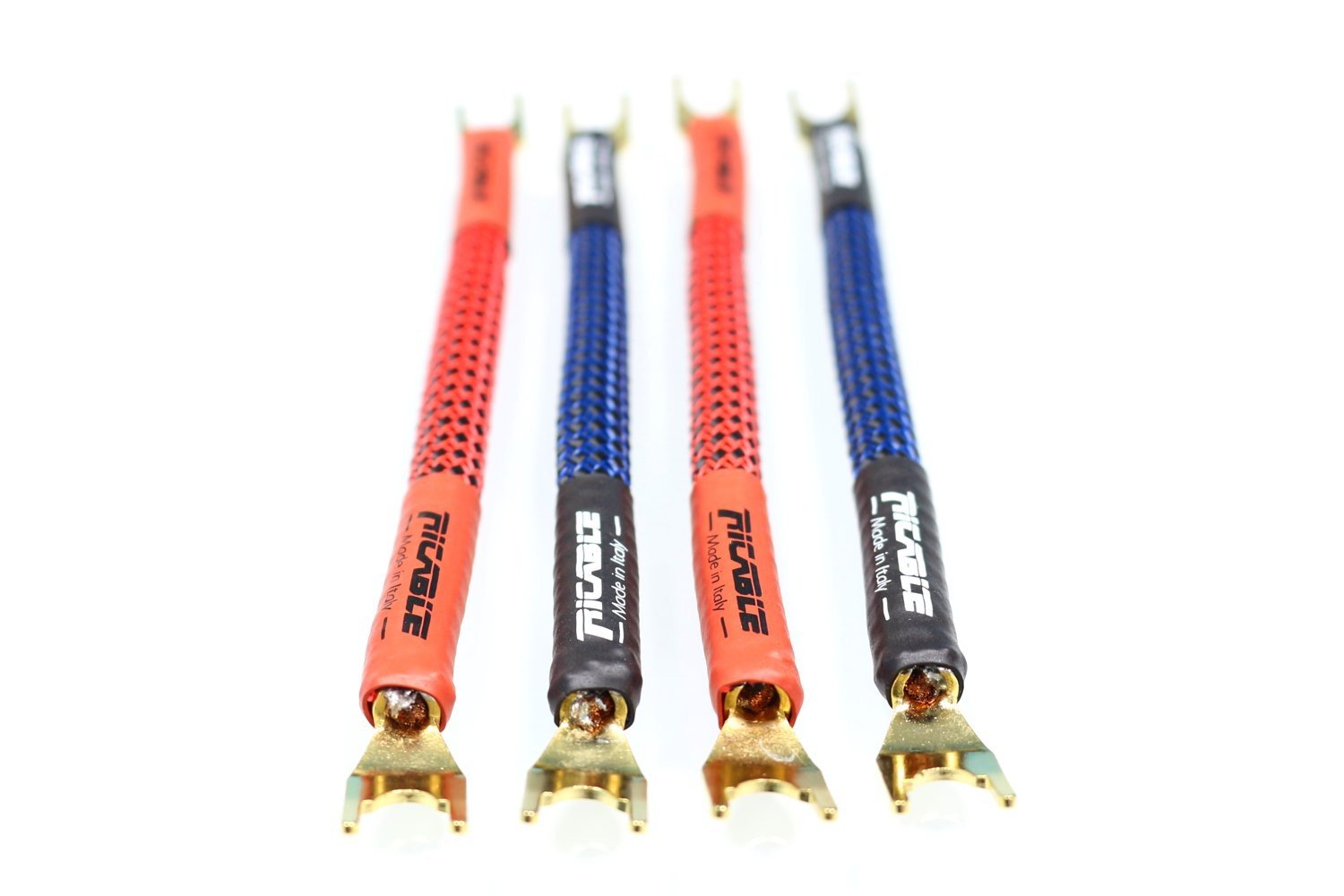
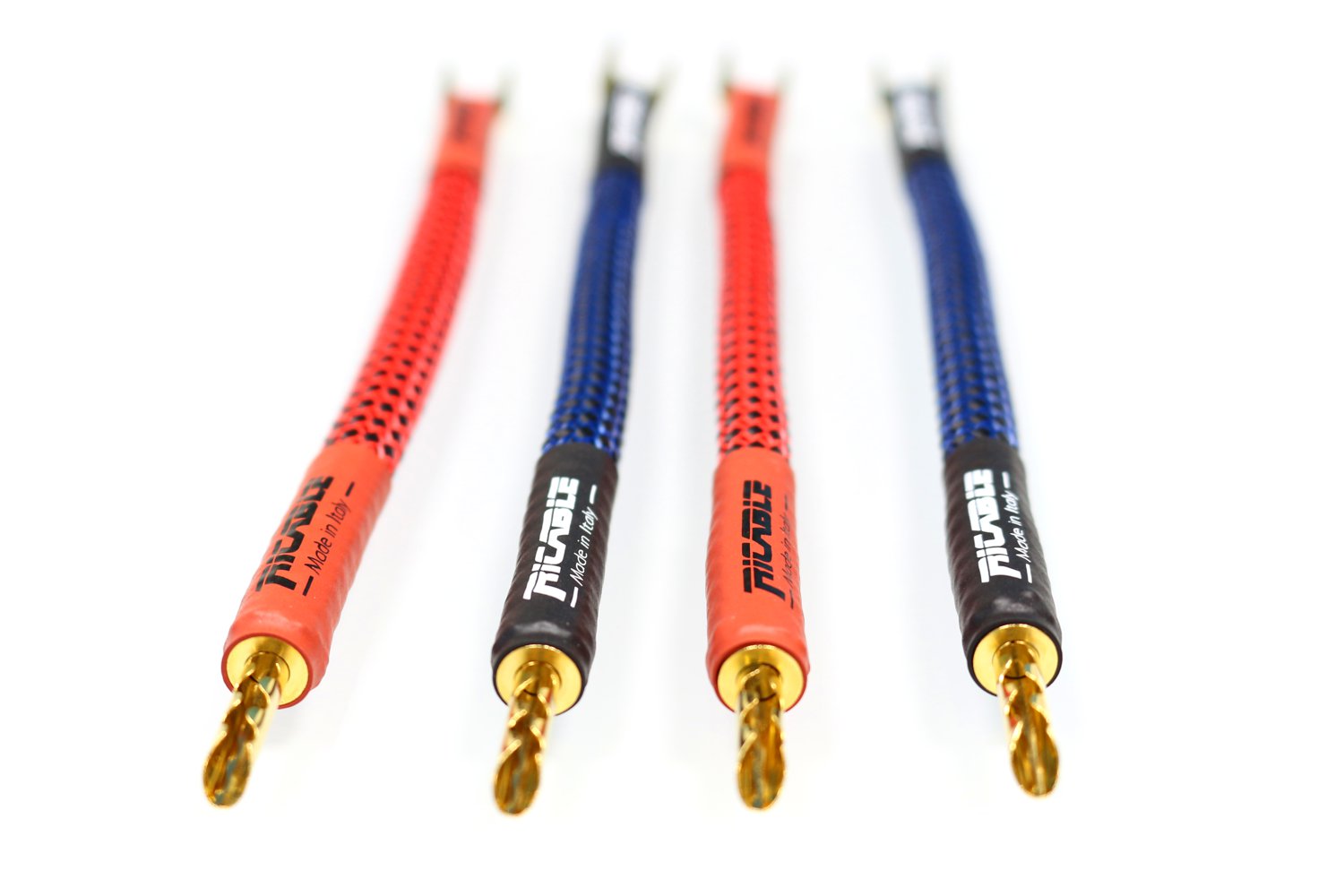
Others, however, believe it is better to do the opposite, i.e. to favour the woofer, the component that requires the most power. In reality, the differences are minimal, and only rarely does anything really change. What we suggest is first of all to make sure that the jumper doesn't act as a bottleneck in your system (see below how) and then make some attempts according to your ear and your system to understand if something changes.
There is no such thing as better quality than what we like best, even according to our own suggestions or habits. You can also refer to the instructions that accompany the product. It is true that we are talking about ten centimetres of cable and, unless the quality is particularly low, the problem does not arise. If it weren't for the fact that, sometimes, the standard jumpers are actually of very poor quality: a strip of wire with a small diameter of 1.5 mm. brass.
How to tell if the jumpers are good and up to the standard of our system
As for the jumpers, the only way to test them is to try moving the speaker cables from the bottom to the top terminals, and vice versa, but there are many conclusions we can draw. So, let's make all the possible assumptions and draw all the imaginable conclusions about how to connect jumpers and speaker cables. Here is the list of possibilities, presented in a schematic but comprehensive manner:
- move the position of the jumpers; if the sound changes, the jumpers are probably acting as a bottleneck and we recommend changing them for optimum performance;
- if the sound doesn't change, perhaps the jumpers are doing an excellent job and are adequate for the system.
Caution, however. If the sound does not change, the following aspects should also be considered:
- If the sound doesn't change, it may be that the speaker cables are of such a low standard that they can't convey enough detail for us to hear differences;
- another hypothesis, if the sound does not change, could be that the system is not revealing enough and the jumper is not acting adequately on the sound.
Having done the necessary tests, you find yourself needing to replace the jumpers on your loudspeakers. Bear in mind that these should be of equal or better quality than the conductors that make up your cables Speaker - brass will not do.
For a choice without compromise, Ricable offers its jumpers Dedalus e Invictuswith the former also optimised for the Magnus series or other lesser speaker cables. These are available in fork/fork as well as fork/banana versions. It is also possible to request a custom length. As far as speaker cables are concerned, on the other hand, the choice is more varied and takes up the four, now classic, series Ricable, i.e. Primus, Magnus, Dedalus e Invictus.

